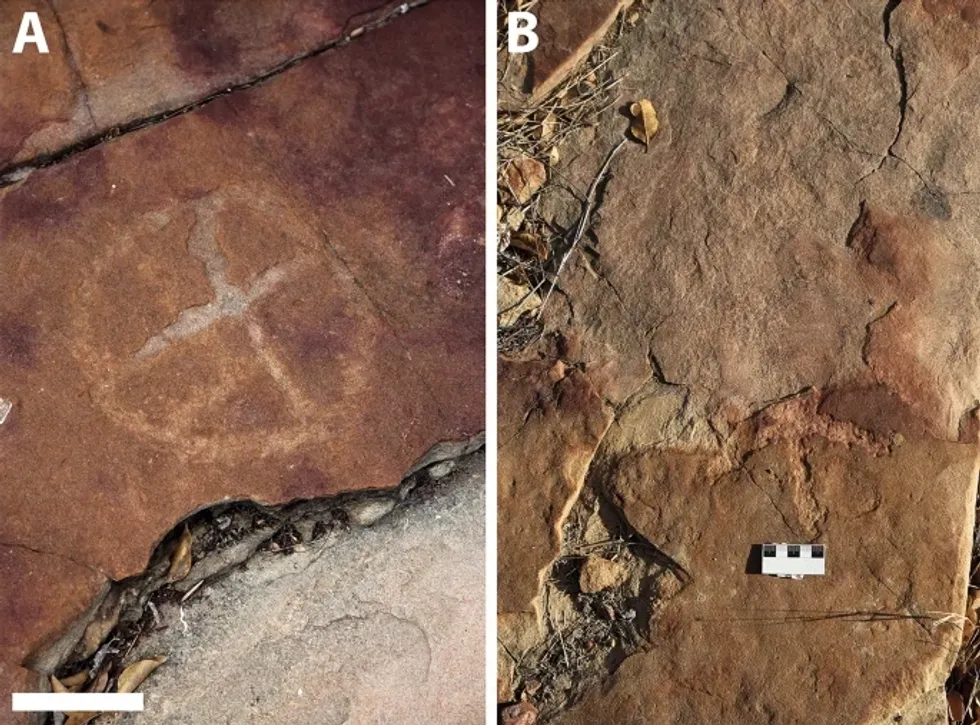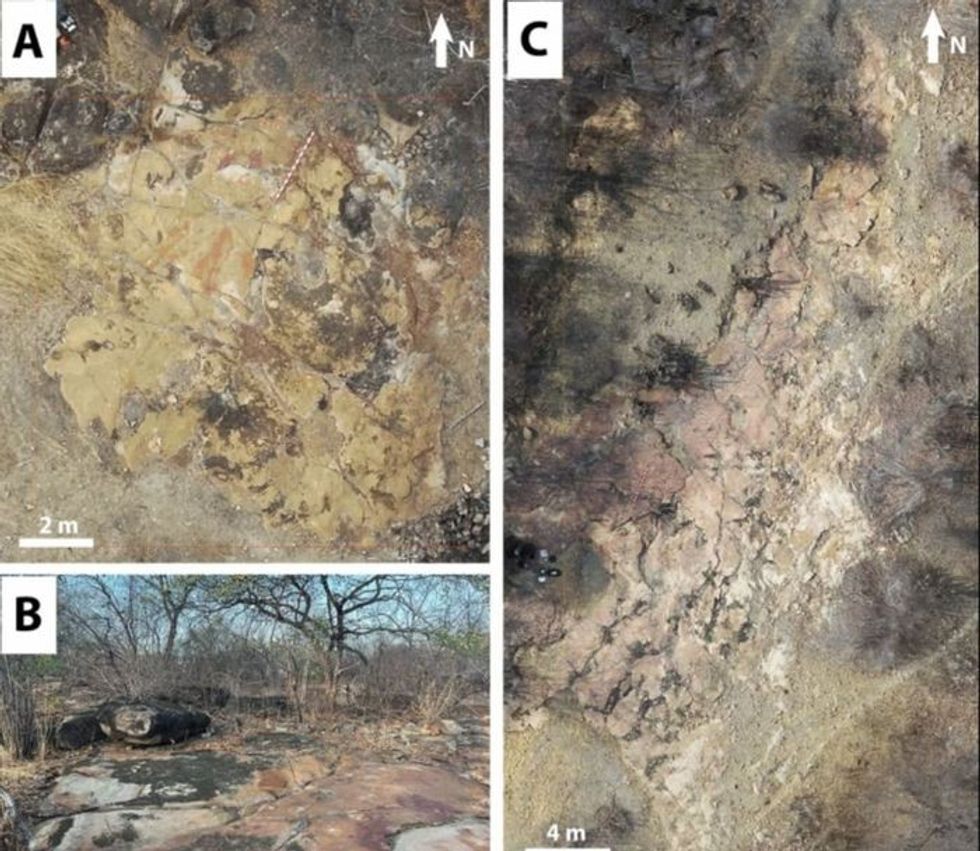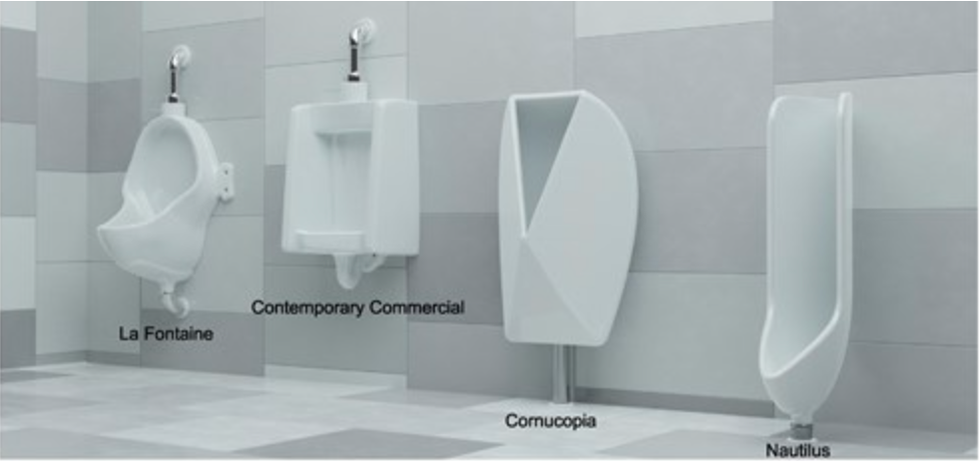Researchers in Brazil have uncovered a remarkable discovery that spans across millennia—dinosaur footprints found alongside ancient rock art dating back over 9,000 years. This significant find occurred in Serrote do Letreiro, located in the Sousa Basin, and the research has been published in the journal Scientific Reports.
The study, led by Leonardo P. Troiano, Heloísa B. dos Santos, Tito Aureliano, and Aline M. Ghilardi, suggests that prehistoric hunter-gatherers in Brazil created mysterious rock art designs—known as petroglyphs—next to dinosaur footprints. These findings offer valuable insights into the intersection of paleontology and archaeology, particularly at the Serrote site.

The paper notes that while researchers first identified the petroglyphs in 1975, they only recently discovered these carvings close to massive dinosaur footprints. This discovery was facilitated by the innovative use of drones. The tracks, they said, belong to dinosaurs from the Cretaceous Period, which ended around 66 million years ago.
Carvings may reflect human fascination with the footprints
Researchers believe ancient humans deliberately placed these carvings next to the dinosaur prints, noting that some petroglyphs are only 2 to 4 inches away and may depict the footprints themselves.
"It would have been impossible to overlook their presence."
— Leonardo Troiano
This suggests that people of that era were deeply curious about the footprints and interacted with them. "The individuals who crafted the petroglyphs were acutely aware of the footprints, likely selecting the location precisely because of them," Leonardo Troiano, the study’s lead author and an archaeologist from Brazil's National Institute of Historic and Artistic Heritage, told Live Science "It would have been impossible to overlook their presence."
Troiano said these ancient humans were highly interested in the footprints and considered them meaningful in some way. This also goes parallel to the location of Serrote. Serrote do Letreiro, which translates to "Signpost Hill" in Portuguese, is close to the Valley of the Dinosaurs, a conservation area renowned for its hundreds of fossilized dinosaur footprints.
Students contribute to groundbreaking research
Troiano and his fellow researchers conducted the research with a group of middle-school students who surveyed the site in 2023. In addition to learning about the convergence of paleontology and archaeology, the students helped photograph the specimens. The team noted that the tracks belong to various types of dinosaurs, such as meat-eating theropods, long-necked sauropods, and two-legged ornithopods, including iguanodontian dinosaurs.
The petroglyphs uncovered were mainly carvings of circles filled with lines and other geometric strokes. These artworks are attributed to humans who lived in the region anywhere between 9,400 and 2,620 years ago. "They were small seminomadic groups of hunters and gatherers who lived in society and used objects made from stones," Troiano said. These ancient humans made these rock carvings with two techniques; perforation and scraping, the team said.
What the carvings reveal about ancient life
"Perforation involves using a kind of stone hammer to create depressions on the surface, resembling stippling, while scraping entails rubbing a stone against the surface until it forms the desired engraving," Troiano explained. The petroglyphs offer crucial evidence about the historical population and shed light on the rituals and practices of that time. “I think rock art creation was embedded in some sort of ritual context: people gathering and creating something, perhaps utilizing some psychotropics,” said Troiano, adding that these people were interested in “what the footprints represent.”

Affirming Troiano’s hypothesis, Jan Simek, a distinguished professor of anthropology at the University of Tennessee, told
CNN, “The paper provides an interesting new example of how ancient people observed and incorporated fossils on the landscape into their religious experiences and interpretations.”
He said this case is another archaeological example of the “human tendency to tie the spiritual world created in the imagination to unexplained things in the world around us.”
Dinosaur tracks found on both sides of the Atlantic reveal ancient migration paths
Just as the petroglyphs of Serrote do Letreiro show a deep human curiosity about the footprints left behind by prehistoric giants, new research is revealing how those same tracks help us understand the world those dinosaurs once walked — a world that spanned entire continents.
A team of international researchers has identified over 260 matching sets of dinosaur footprints in both Brazil and Cameroon. Led by Southern Methodist University paleontologist Louis L. Jacobs, the discovery shows that dinosaurs once roamed freely across South America and Africa, back when the two continents were part of the same supercontinent: Gondwana.
"In terms of their shapes, they are almost identical."
— Louis L. Jacobs
Before the continents drifted apart, these river valleys provided critical migration paths. “Plants fed the herbivores and supported a food chain. Muddy sediments left by the rivers and lakes contain dinosaur footprints,” Jacobs explained. “These river valleys could provide specific avenues for life to travel across the continents 120 million years ago.”
"These river valleys could provide specific avenues for life."
— Louis L. Jacobs
SMU research associate Diana P. Vineyard, a co-author of the study, added that most of the footprints were created by three-toed theropods, while others likely came from sauropods or ornithischians. The footprints offer a striking parallel to the ones that captured the imagination of ancient people at Serrote — a reminder that long before satellites or maps, footprints told the story of life on Earth.



















 Music isn't just good for social bonding.Photo credit: Canva
Music isn't just good for social bonding.Photo credit: Canva Our genes may influence our love of music more than we realize.Photo credit: Canva
Our genes may influence our love of music more than we realize.Photo credit: Canva
 Great White Sharks GIF by Shark Week
Great White Sharks GIF by Shark Week

 Blue Ghost Mission 1 - Sunset Panorama GlowPhoto credit:
Blue Ghost Mission 1 - Sunset Panorama GlowPhoto credit: 
 medical school brain GIF
medical school brain GIF woman leaning on man's shoulder
Photo by
woman leaning on man's shoulder
Photo by